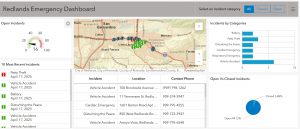Chapter 6 introduces spatiotemporal data and the Internet of Things. I enjoyed learning about the basic terms and the different groups that this data can be categorized in. Before this, I was unaware of what spatiotemporal data is, and I think that it is pretty cool that different things can be communicated on maps through these categories. Additionally, I did not know what the term “Internet of Things” meant or referred to. After reading about it, I now understand that it is any sort of object with a sensor and network connection that can communicate different types of data, as well as collect data. The part of IoT that resonated the most with me was items/devices that are found in smart homes. The book used the examples of an Amazon echo and sprinkler systems, and I believe that Ring doorbells could be part of this category as well.
The book also highlighted the newer developments of ArcGIS Velocity, which is a real-time GIS product and has the ability to perform disaster recovery and is offered as a subscription. There are many new features/items that the Velocity offers to ArcGIS, such as feed items, real-time analytic items, and big data analytic items. Another point that I found interesting was the use of ArcGIS for dashboards in cars. I really enjoy the concept of dashboards (for data) in general, just because I believe that they communicate data in a very simple and straightforward way and are similar to infographics. So when the book touched on the use of ArcGIS dashboards, I was intrigued.
Application: For this chapter, I would like to create a web map that includes real-time layers. I’d be interested in looking at population levels in Columbus, OH and seeing how the levels fluctuate in real time. The reason I would choose Columbus is because it is such a large city with many different types of populations, so I think the data could be insightful.
